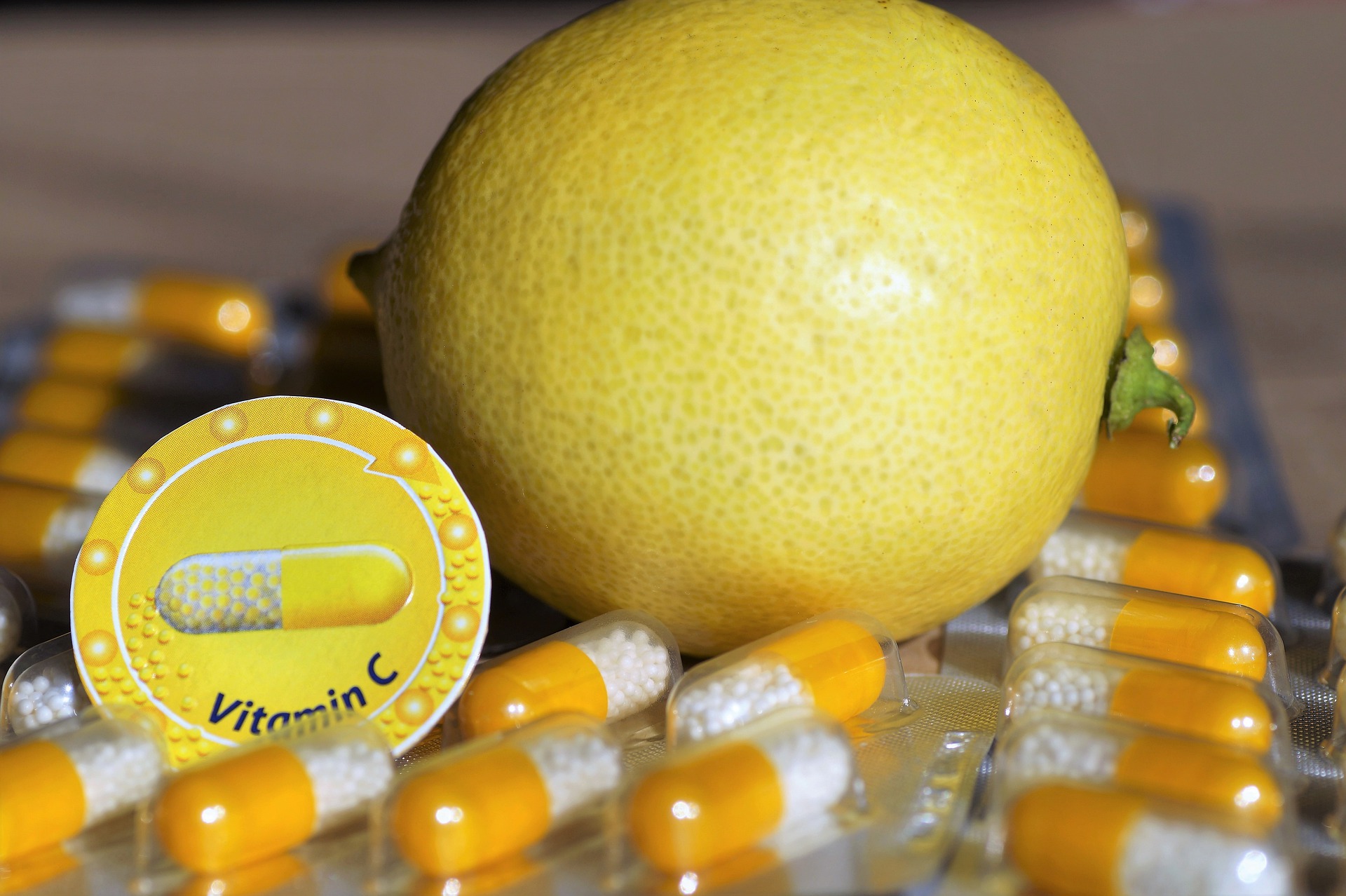Vitamin C, or ascorbic acid, is a water-soluble vitamin. This means that it dissolves in water and is delivered to the body’s tissues but is not well stored. In addition, unlike animals, human’s body doesn’t make vitamin C so it must be taken daily through food or supplements.
Functions of Vitamin C:
- Vitamin C is a powerful antioxidant. Even in small quantities vitamin C can protect critical molecules in the body such as proteins, lipids, carbohydrates, nucleic acids, DNA and RNA from oxidative damage.
- Vitamin C also plays a critical role as a cofactor, a molecule that helps enzymes involved in chemical reactions.
- Vitamin C is critical to immune function. It is highly concentrated in immune cells with neutrophils and leukocytes having roughly fifty to a hundred times higher vitamin C concentrations than plasma. One of the early stages of the body’s immune response to viral or bacterial infection involves neutrophil infiltration into an infected tissue where the cells engulf the pathogens and initiate their removal. Neutrophils generate large quantities of reactive oxygen species, but the high levels of vitamin C present in immune cells protect them from reactive oxygen species induced DNA damage. Vitamin C also appears to boost the immune system by promoting the proliferation of T cells (lymphocytes) and preventing T cell death.
How vitamin C gets into the body’s tissues:
- Vitamin C is present in the body in two different forms, either its reduced state, ascorbate or its oxidized state, dehydroascorbic acid. Dehydroascorbic acid (DHA) undergoes frequent intracellular recycling back to the reduced state. This cycle happens about four times for every vitamin C molecule.
- Oral vitamin C is absorbed in the small intestine primarily via sodium dependent vitamin C transporters and to a lesser extent glucose transporters. Absorption of the vitamin C via sodium dependent vitamin C transporters is dose dependent and subject to transport our saturation.
- Dehydroascorbic acid competes with glucose for uptake via glucose transporters in the gut. That means its uptake might be impeded in a person with high blood glucose levels like in diabetes. Fortunately most tissues, including those in the gut, don’t transport dehydroascorbic acid with the exception of red blood cells. Instead, they use sodium dependent vitamin C transporters to transport ascorbate. Red blood cells transport DHA only and they generate their own ascorbate via recycling after vitamin C is absorbed.
- Ascorbate enters the plasma and then gets distributed throughout the body’s tissues. The concentration in different tissues varies with the lowest amounts found in muscle, heart and kidneys and the highest amounts found in the brain and vitamin C is found in high concentrations in adrenal glands and the brain as specially in the hippocampus and frontal cortex regions areas that are important for memory consolidation learning and aspects of executive function. The brain retains vitamin C during times of deficiency at the expense of other tissues.
- Vitamin C can be broken down in the liver into various intermediate molecules, and in the end vitamin C and its metabolites accumulate in the kidneys and are excreted in urine. Urinary excretion is directly proportional to plasma concentrations.
People with higher need of vitamin C:
- Smokers, because smoking increases oxidative stress increasing antioxidant needs.
- People who drink alcohol because alcohol consumption increases urinary vitamin C losses by nearly 50%.
- A person with inflammatory bowel diseases, like Crohn’s or ulcerative colitis and kidney failure. Single dialysis session decrease the patient’s plasma vitamin C levels to roughly half of their pre dialysis levels.
Bioavailability:
Bioavailability of oral vitamin C is both frequency and dose dependent.
It’s important to note that multiple high doses of vitamin C supplements, in the 2 to 3 gram range given 4 to 6 times per day, maintain plasma levels 2 to 3 times higher throughout a 24-hour period.
A few studies suggest that oral bioavailability of vitamin C can be increased when consumed in liposomal form, but only in doses higher than 5 grams. Liposomal vitamin C doses less than 5 grams achieve similar plasma vitamin C concentrations as non liposomal vitamin C. The liposomal form took about an hour longer to reach the maximum vitamin C blood concentration and it’s half-life was 2 hours longer compared to free vitamin C indicating increased bioavailability.
Intravenous vitamin C bypasses intestinal absorption, which means that it also bypasses the saturable transport mechanisms.That means that the bioavailability of intravenous vitamin C is a lot higher than oral vitamin C, potentially reaching blood concentrations that are 30 to 70 times higher than can be achieved orally.
Warning:
Intravenous vitamin C is well tolerated and has low toxicity. The most commonly reported side effects include mild to moderate nausea, headache and dry mouth. Less common side effects include fatigue, hypertension, loss of appetite and hyperglycemia.
People who have hemochromatosis or whose iron levels are abnormally high should exercise caution when considering vitamin C supplementation due to its propensity to improve the absorption of dietary iron.
People who have a deficiency in the enzyme glucose 6-phosphate dehydrogenase are at risk of hemolysis, the rupturing of red blood cells, when given high doses (40 grams or higher) of intravenous vitamin C.
Classic manifestation of severe vitamin C deficiency is scurvy, a terrible condition characterized by bleeding, swollen gums, poor wound healing, joint pain and bruising. These early features of scurvy show up in as little as three months of vitamin C depletion. As scurvy progresses, a person might experience shortness of breath, dry eyes, joint swelling, weakness, fatigue and depression.
Food Source of Vitamin C:
- Citrus (oranges, kiwi, lemon, grapefruit)
- Guavas
- Papaya
- Bell peppers
- Strawberries
- Tomatoes
- Cruciferous vegetables (broccoli, Brussels sprouts, cabbage, cauliflower, kale)
- Snow peas
- Acerola cherry
- Black currant


